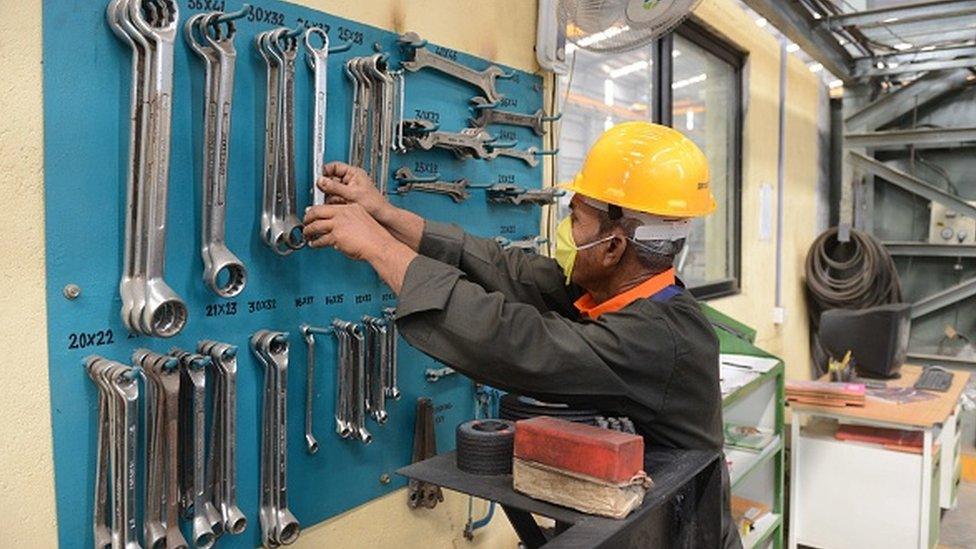Indian growth figures miss estimates
- Published

India's economy grew by 7.1% in the financial year to March, slower than the 8% recorded in the previous year.
In the first three months of 2017, the annualised rate was 6.1%, slowing from the previous quarter's 7% rate and lower than analysts had expected.
The economy took a hit from the government's decision to withdraw 500-rupee and 1,000-rupee banknotes in an anti-corruption drive.
The move last November took 86% of the currency out of circulation in one go.

Analysis: Sameer Hashmi, BBC News
The latest economic growth figures might have missed estimates, but doesn't come as a huge surprise. The ban on 86% of bank notes in circulation was expected to have a severe impact on the economy. But the data suggests that the recovery has been quicker than expected.
However, the latest figures do not tell the complete story. India's economic growth data does not take into account the performance of small businesses and the unorganised sector. Both put together constitute more than 50% of the total economic output. These segments were the worst-hit by the ban on banknotes, with many small enterprises still trying to recover.

"This is a sharper deterioration than what I expected," said Ashutosh Datar, economist at IIFL Institutional Equities. "The fourth quarter is a bit weaker than what I expected."
The so-called "unorganised sector" - made up of informal workers - is believed to account for about 40% of India's economy.
- Published20 January 2017
